It’s a dark, rainy night in the beech forests of New Zealand. As the rain patters on the leaf litter, a slow-motion chase plays out on the forest floor. A predatory snail is on the hunt. The size of a lemon, it slides along the forest floor, leaving a glistening slime trail in its wake. It’s prey: an unsuspecting earthworm, wriggling along the snail’s path.
A pause, and the snail lunches forward, grasping the worm in its mouth and slurping it down like a long, saucy strand of spaghetti. This snail is a powelliphanta, a fantastic New Zealand endemic that few have ever seen.
“These snails are quite special because they’re carnivorous,” says Ruth Bollongino, pulling out a large plastic tupperware rattling with shells. “They’re not after the lettuce in your garden. They’re out hunting worms and other snails, and they can suck down earthworms like spaghetti.” (Fast forward to 1:50 in the video below to watch a powelliphanta predate an earthworm.)
Bollongino is the Science Advisor & Director of Operations for Project Janszoon, a conservation organization dedicated to restoring wildlife and ecosystems within Abel Tasman National Park. Situated at the top of New Zealand’s South Island, the park is famous for its multi-day trek across a remote coastline of bays and beaches.
Bollongino and I are sitting at the ranger’s hut at Anchorage campsite, where I’ve traveled in the hope of seeing a flock of kaka, a garrulous and charismatic parrot species recently reintroduced into the park. But high in the hills behind us, far from the tourists and trekkers enjoying the beach, are two species of endangered powelliphanta snail.
Bollongino rummages through the box and pulls out the largest of the shells. There are at least 20 species in the Powelliphanta genus (with nearly 60 subspecies) that live across the North and South islands. Most are isolated populations living in a small geographic area; on top of a mountain, or in a particular patch of remnant forest.
This shell belongs to Powelliphanta hochstetteri. At nearly 7 centimeters (3 inches) across, it’s the size of a round, plump lemon, with a swirl of chocolate and caramel stripes. “And this isn’t even the biggest species,” Bollongino says. “There are some that grow up to 9 centimeters (3.5 inches). They’re really, really beautiful.” Scientists think that some powelliphanta species can live for about 20 years. The smaller shells in her collection belong to Rhytida oconneri, a related species found only in Abel Tasman.
Rats, Snails, and Ravenous Rails
Powelliphanta were once so common that they caused problems for drivers on rainy nights, forcing them to swerve across roads covered with slow-moving snails. Today, they’re one of the world’s most endangered invertebrates.
Populations of most species are in decline thanks to multiple threats, including invasive predators, habitat loss, and climate change. Today, the top of the South Island — including Abel Tasman and the hills and forests surrounding the city of Nelson — is one of the snail’s last strongholds.
Much of Project Janszoon’s work revolves around controlling invasive predators, like rats and stoats, to help restore populations of native birds. The hope was that these efforts would also benefit powelliphanta. But, as always in science, it pays to check your assumptions.
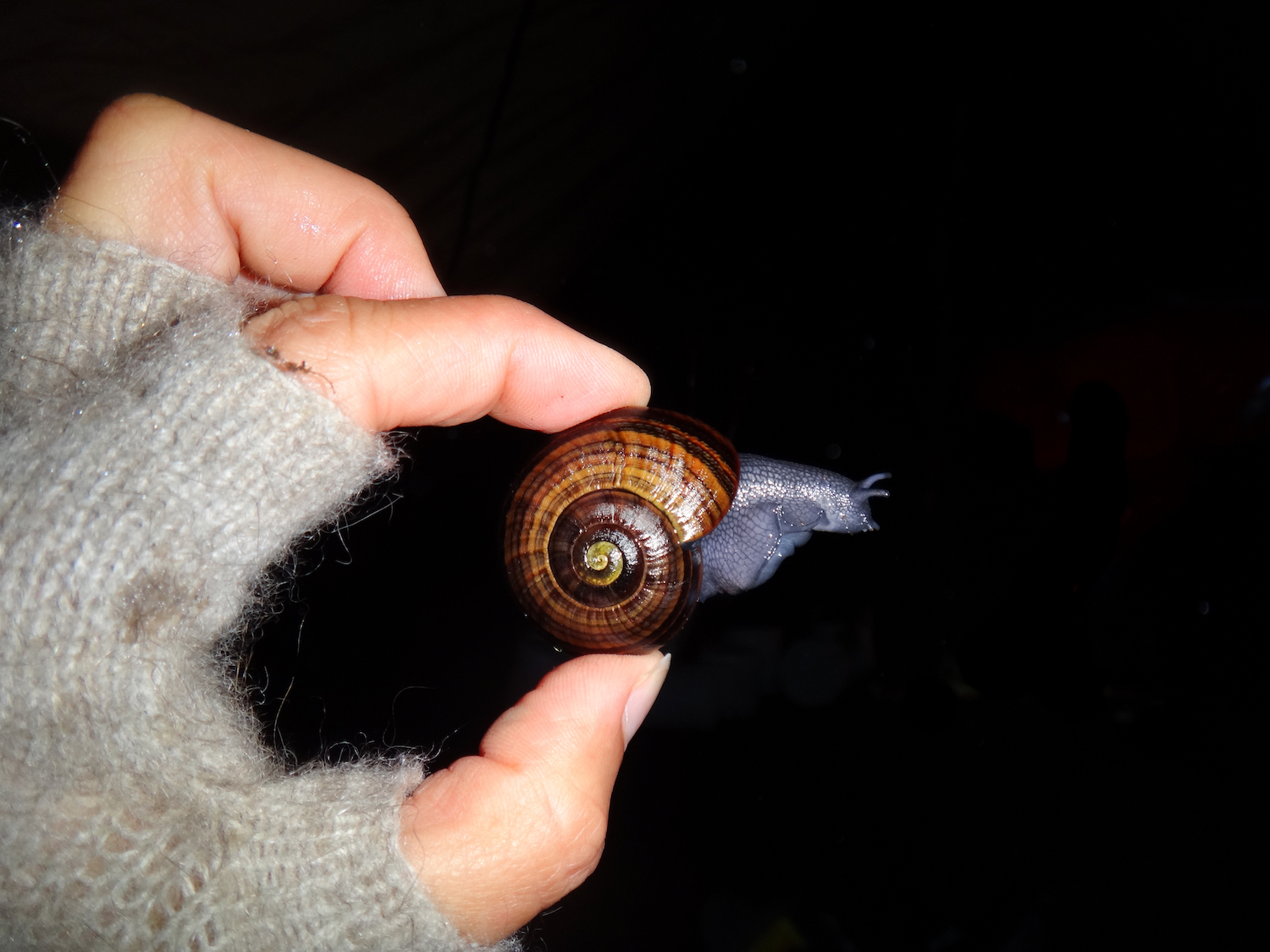
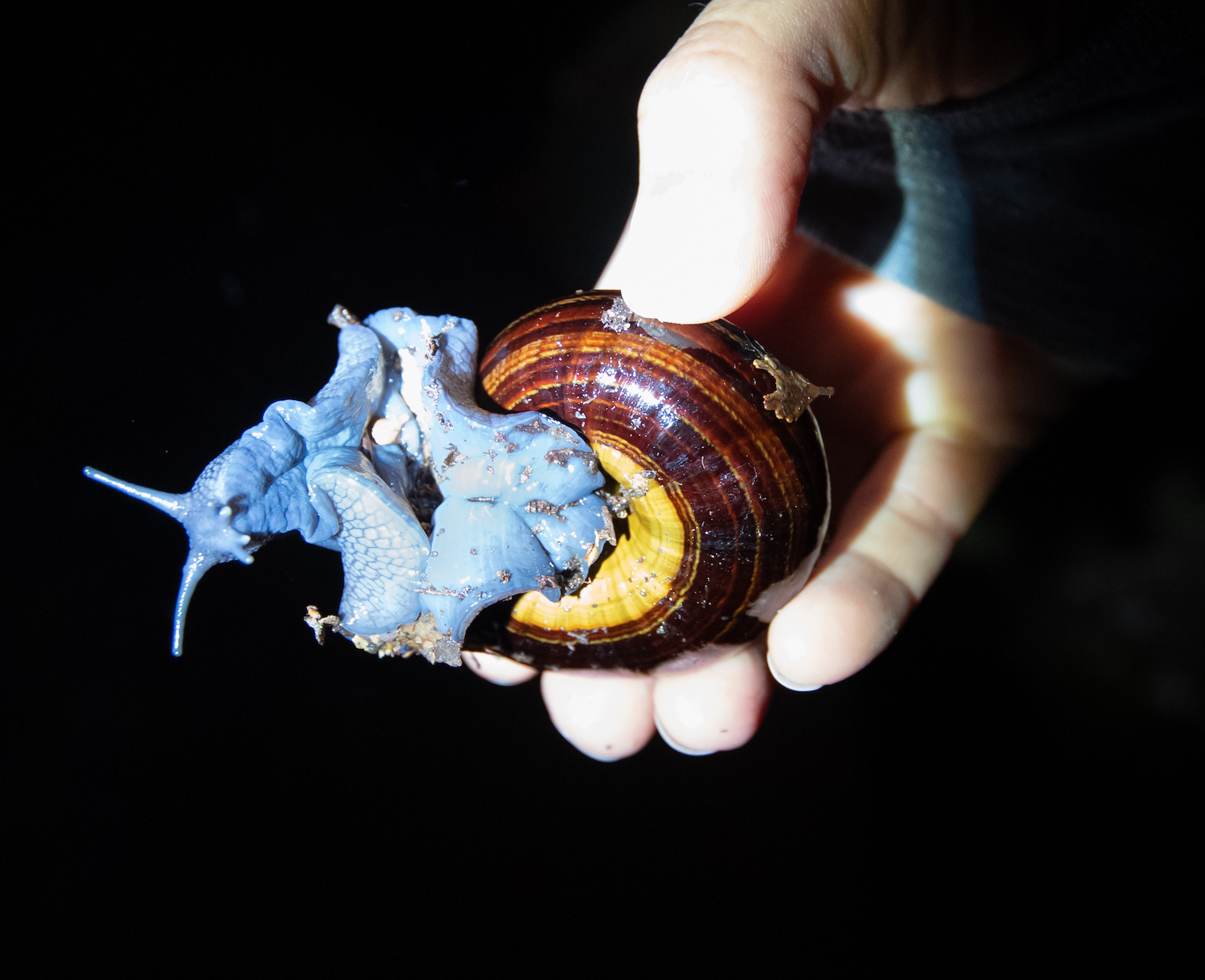
In 2016, Bollongino and her team started a mark-recapture study at two plots high in the hills, in the west of the national park. Year after year they returned to the sites, picking up each and every snail they could find and tagging them with small, colored numbers designed for shellfish and bee research. The tags allowed them to identify individual snails and follow their fate over time.
“So this is my little steampunk snail,” says Bollongino, picking up another large shell with a tiny transmitter glued on. “We had 10 of these and we followed their movements for a month to see how far they actually go.” The snails followed a random pattern, trundling through the forest and even up trees, but sticking within the same 5 or so square meters. “It’s not the most exciting data,” she says, laughing.
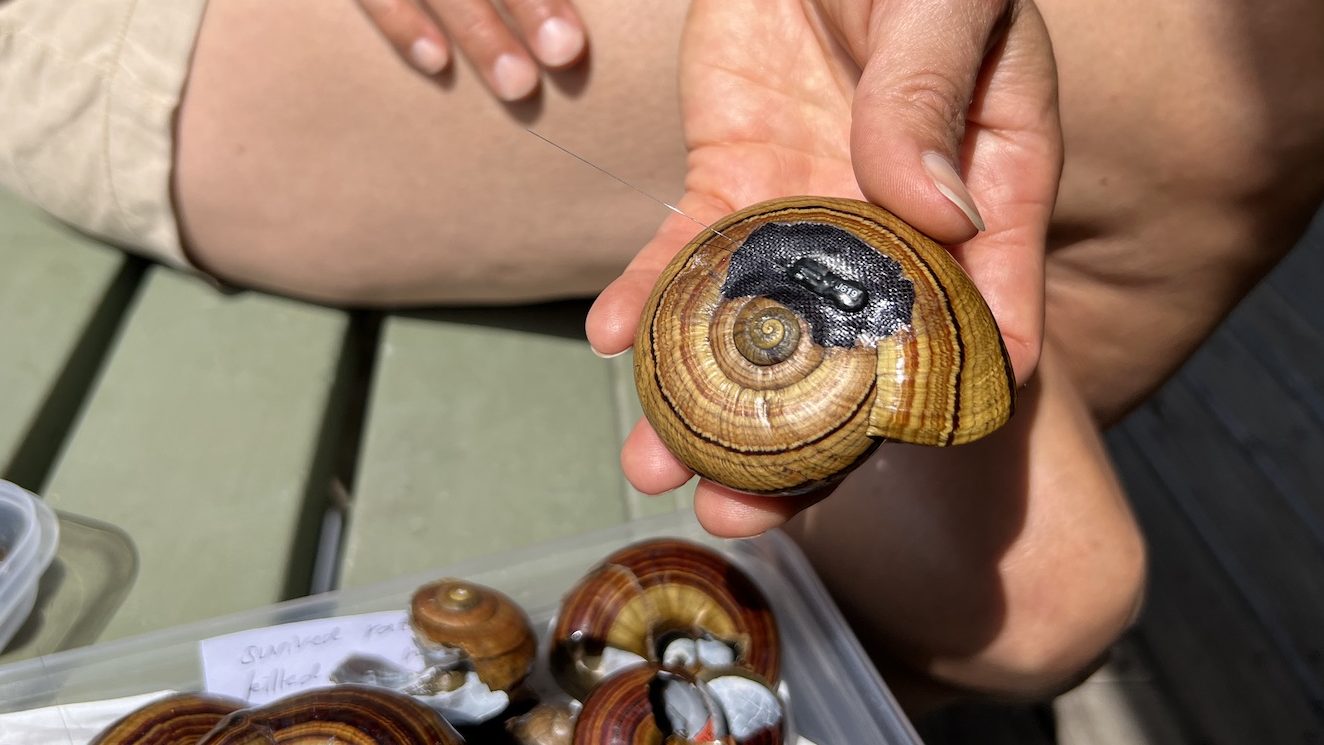
You might think that snails make for an easy study species. After all, they move slowly and don’t bite. But powelliphanta research is grueling in its own way. The snails live at the top of steep, forested mountains, and they only come out on wet, rainy nights. Which means working 15-hour shifts in the cold and the dark, wet and shivering while using headlamps to navigate the forest.
“It’s the hardest thing I ever did,” says Bollongino. “But on the other hand, it was also the most fascinating project I ever worked on, because you learn so much. And they always surprised us.”
One surprise — and a crucial piece of information for conservationists — came after Bollongino and her team examined the shells of dead snails they found across their study plots. “Snails are great study animals, because even when the snail is dead, you still have the shell that gives you an idea of how they died,” she explains.
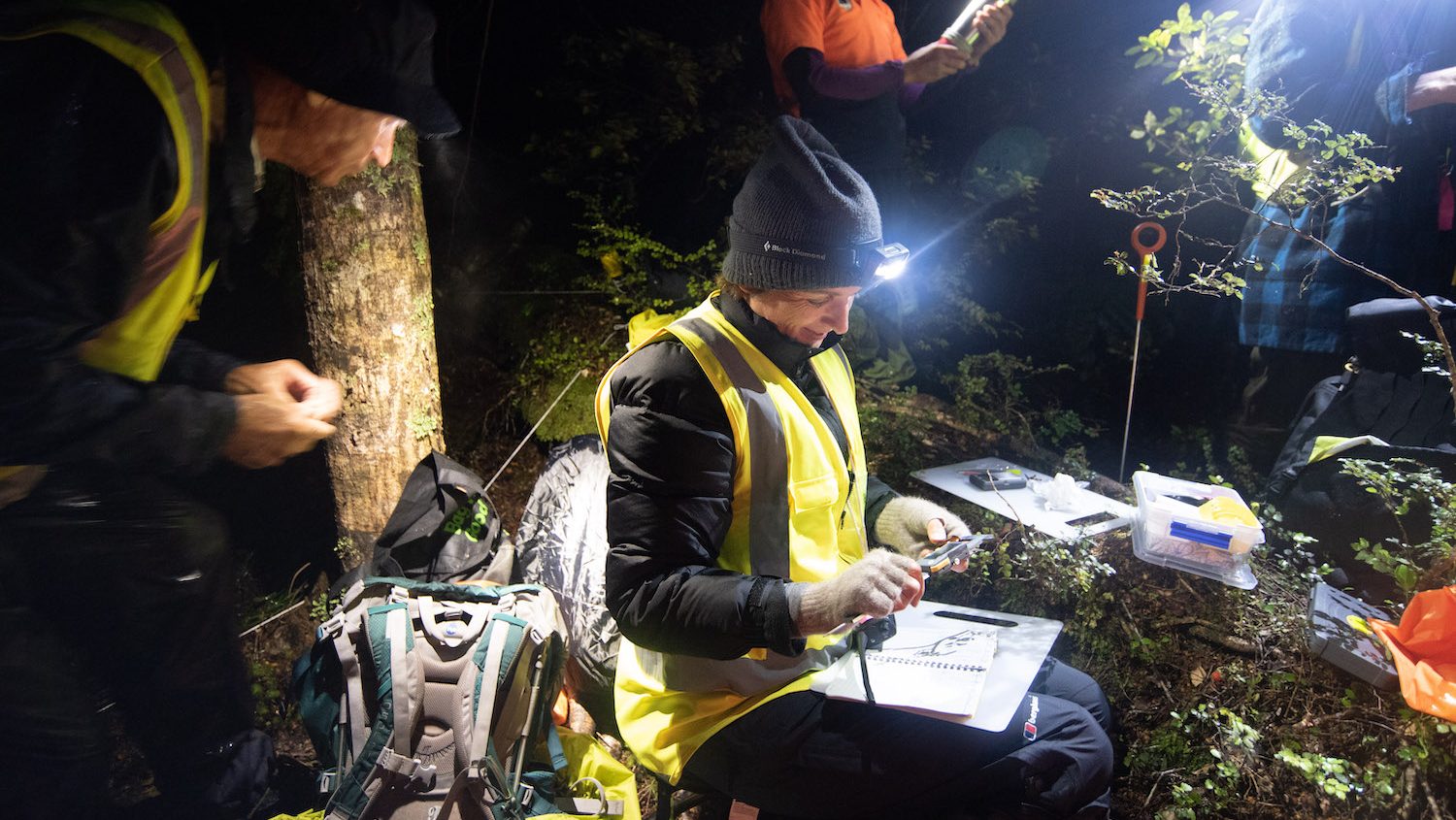
“So this one has clearly been eaten by a rat,” says Bollongino, picking up a shell with a hole gnawed through the side. “So you see all the little teeth marks here, these zigzags, they do what I call a nibble frenzy. They just go nuts.”
Then she selects another damaged shell, with clean, broken edges. This damage is caused by weka — a large, flightless bird related to rails — which stalk through the undergrowth and fill the same ecological niche as small mammals. Weka predation looks distinctly different to rat nibbling, because the birds kill the snail by positioning it on the forest floor and then smashing their sharp beak straight through the shell, creating clean breaks and deep punctures.
Bollongino and her team found hundreds upon hundreds of weka-damaged shells in their study plots, allowing them to determine that the snails were suffering at least a 70% mortality rate from weka predation. Under that amount of pressure, they predicted that the local snail population would go extinct within 4 to 5 years.
It was an important discovery because until that point scientists assumed that invasive rats were the most significant predators of powelliphanta, and that rat control was key to the snail’s survival.
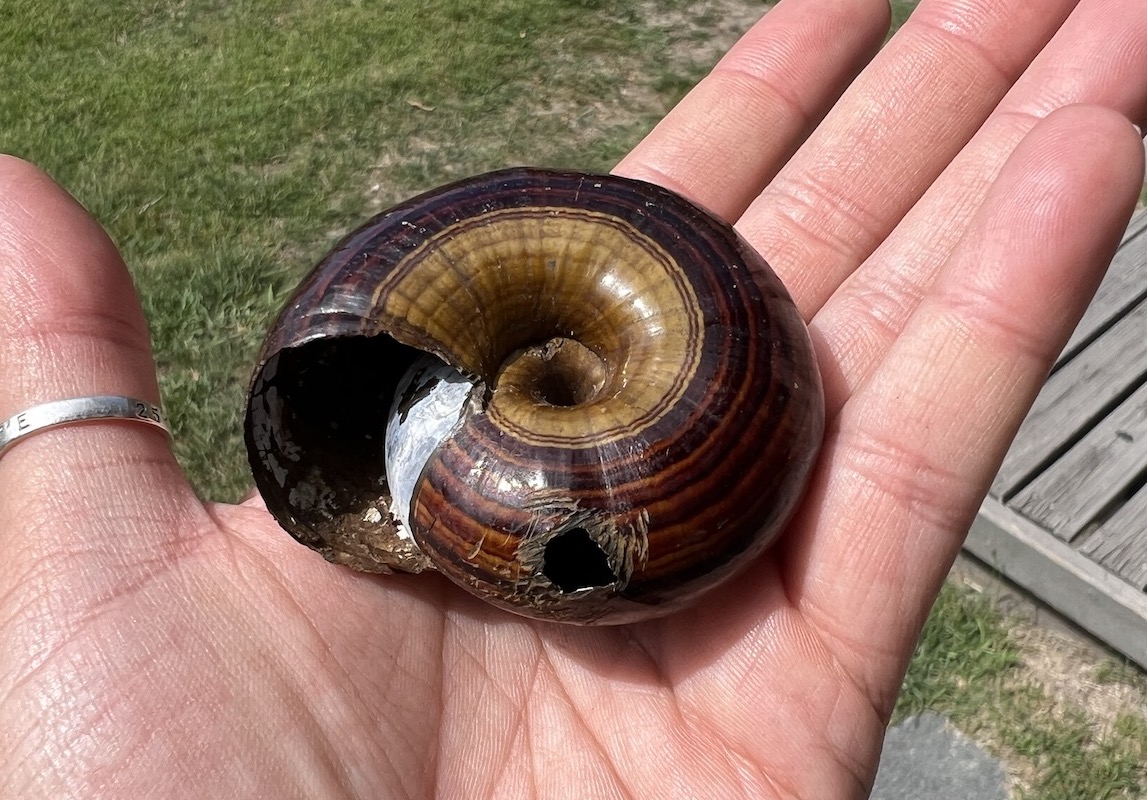

Tiny Fences For Big Snails
Weka, like powelliphanta, are endemic to New Zealand. So why are they causing such problems for the snails? Bollongino explains a confluence of factors is contributing to a boom in local weka populations.
Populations of many of New Zealand’s native birds have collapsed thanks to invasive predators. That means less competition and more prey for weka, who will also eat mice and rats. Meanwhile, the weka have few predators to worry about. Since the extinction of the Eyles’s harrier and laughing owl, their only real predators are feral stoats, which will eat weka chicks and their eggs. The birds also reproduce quickly, with females capable of raising 4 or 5 clutches per season, adding up to 15 or so chicks.
“In the 90s, they were no weka here,” says Bollongino. “They were nearly extinct in the area, and they were so precious we’d report each and every sighting.” Now, the national park campgrounds are plastered with signs warning visitors to zip up their tents and secure any food, lest the gangs of inquisitive and persistent weka roaming the campgrounds snatch someone’s lunch.

The resurgence of weka is a conservation success. But because ecology is never simple, that comeback has come at a cost for the snails. “What we see is that the decline of the powelliphanta coincides exactly with the arrival of weka records up in the uplands,” says Bollongino. “And we also have the shells that prove it.”
The other problem is that the weka are just one of many threats the snails are up against. Powelliphanta are also eaten by exotic predators, including rats, European thrush, hedgehogs, pigs, and Australian brush-tailed possums.
On top of that, their habitat is changing. Those same invasive species, along with goats and deer, are also eating the forest’s understory to within an inch of its life, causing soils to dry out and decreasing the amount of leaf litter where the snails can hide and forage, and potentially impacting their prey species.

“They are just being hammered from all sides, not to mention the effect of global warming,” says Bollingino. Last year, the region experienced a severe drought, with hardly any rain for nine months. “The older snails can deal with it to some degree, but drought can kill the young snails, like these little babies,” she says, holding up some blackberry-sized shells. “So that’s the problem for the snails, everything’s against them. And with weka, it’s the other way around.”
To help powelliphanta within the national park, Project Janszoon built two weka-proof enclosures in areas with surviving snail populations. These snail sanctuaries are 70 by 70 meters in size, with mesh that’s small enough to keep weka out, but large enough to allow juvenile snails to disperse outside of the fence.
Two years later, populations of both snail species are recovering within the fence, and so are other invertebrate species. “There’s weta everywhere, and earthworms and flatworms… it’s just crawling with life, whereas outside the fence, there’s just nothing,” says Bollingino.
Bollongino says that the snails are a great reminder of why checking our assumptions with monitoring is so important for conservation. “We thought we just needed to control the exotic pests, and then everything would fall into place,” she says. “That’s often the case, but not always.”
Without sound science, Abel Tasman’s powelliphanta might have been lost to weka overpredation. Now, Project Janszoon and their partners at the Department of Conservation will be able to ensure these weird, wonderful, earthworm-slurping megasnails survive for years to come.
Project Janszoon is part of the Kotahitanga mō te Taiao Alliance, a collaboration of Iwi (Māori Indigenous tribes), non-profits, and governments at the top of New Zealand’s South Island. It aims to restore and enhance nature across 3.4 million hectares of land and sea. The Nature Conservancy supports the alliance by providing facilitation, funding, science, and global expertise.

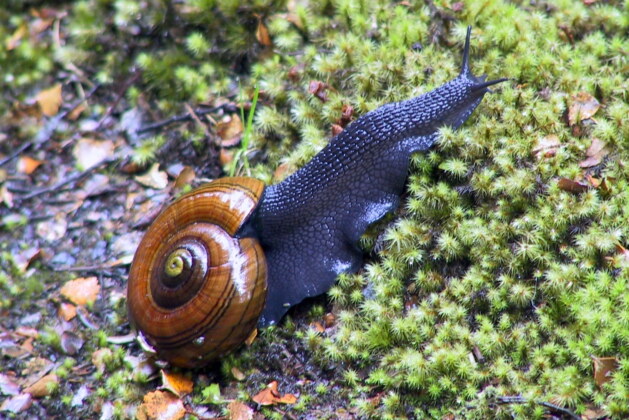


Leave a comment